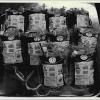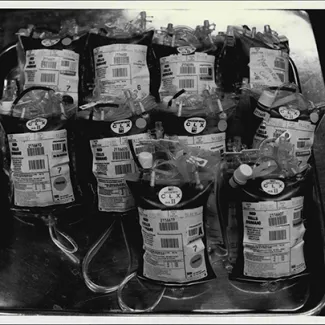

Scientists were still unsure of exactly how easily HIV was transmitted, but the CDC was fairly certain that it traveled by blood. (Today, we know that certain activities where bodily fluids are exchanged raise a person’s risk of contracting HIV.) As recipients of blood transfusions, such as people with hemophilia, started to rapidly fall ill, the CDC workers met their counterparts at blood banks to urge them to screen the entire blood supply. No test was available for AIDS specifically, but an existing test for Hepatitis B proved to be a good substitute. If the blood tested positive for Hepatitis B, 88 percent of the time its donor also had AIDS. Wary of the cost of administering so many tests and demanding more evidence of contamination, the blood banks refused. As a result, almost half of the ten thousand people with hemophilia living in the United States contracted AIDS. Four thousand would later die.